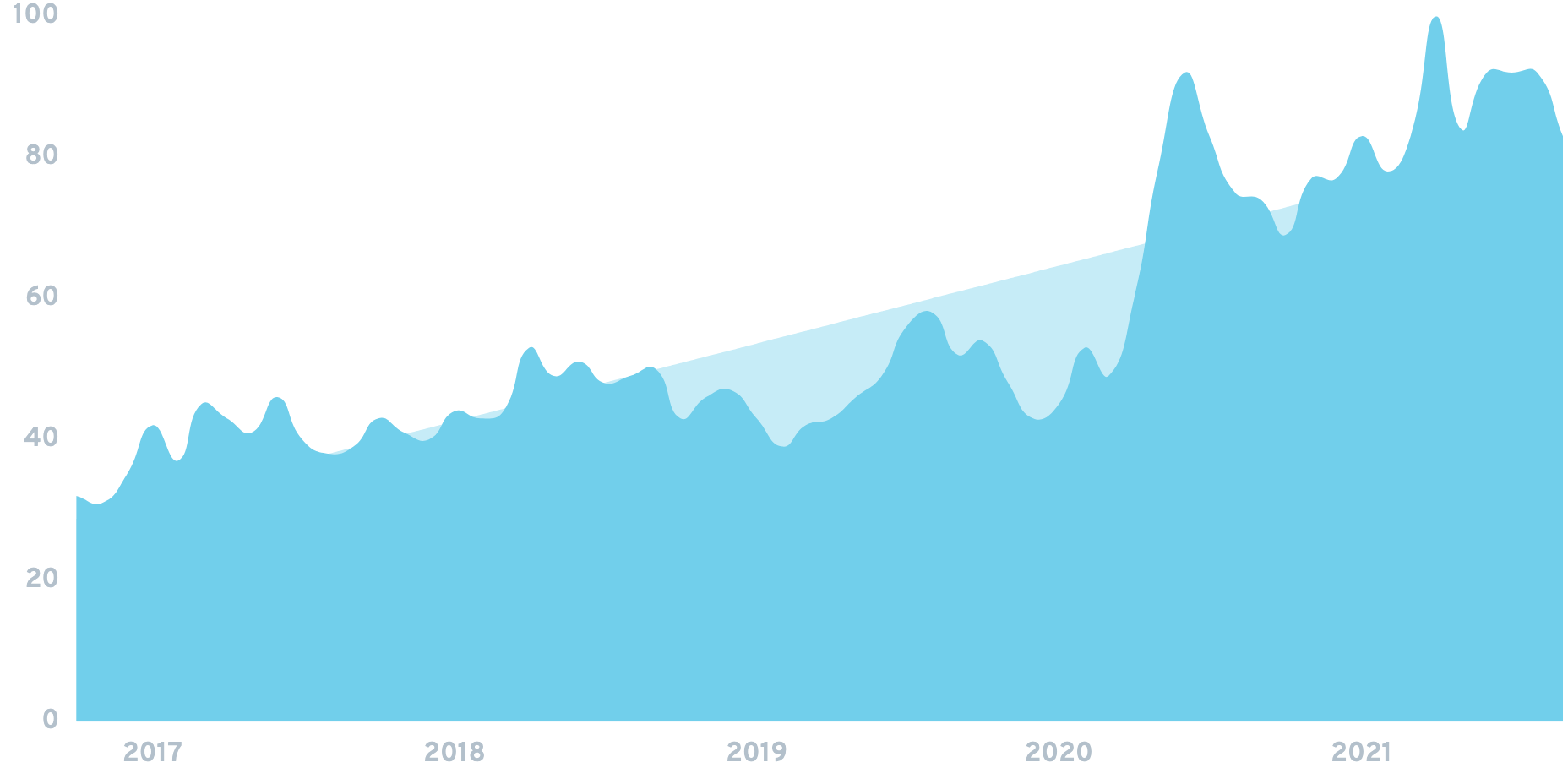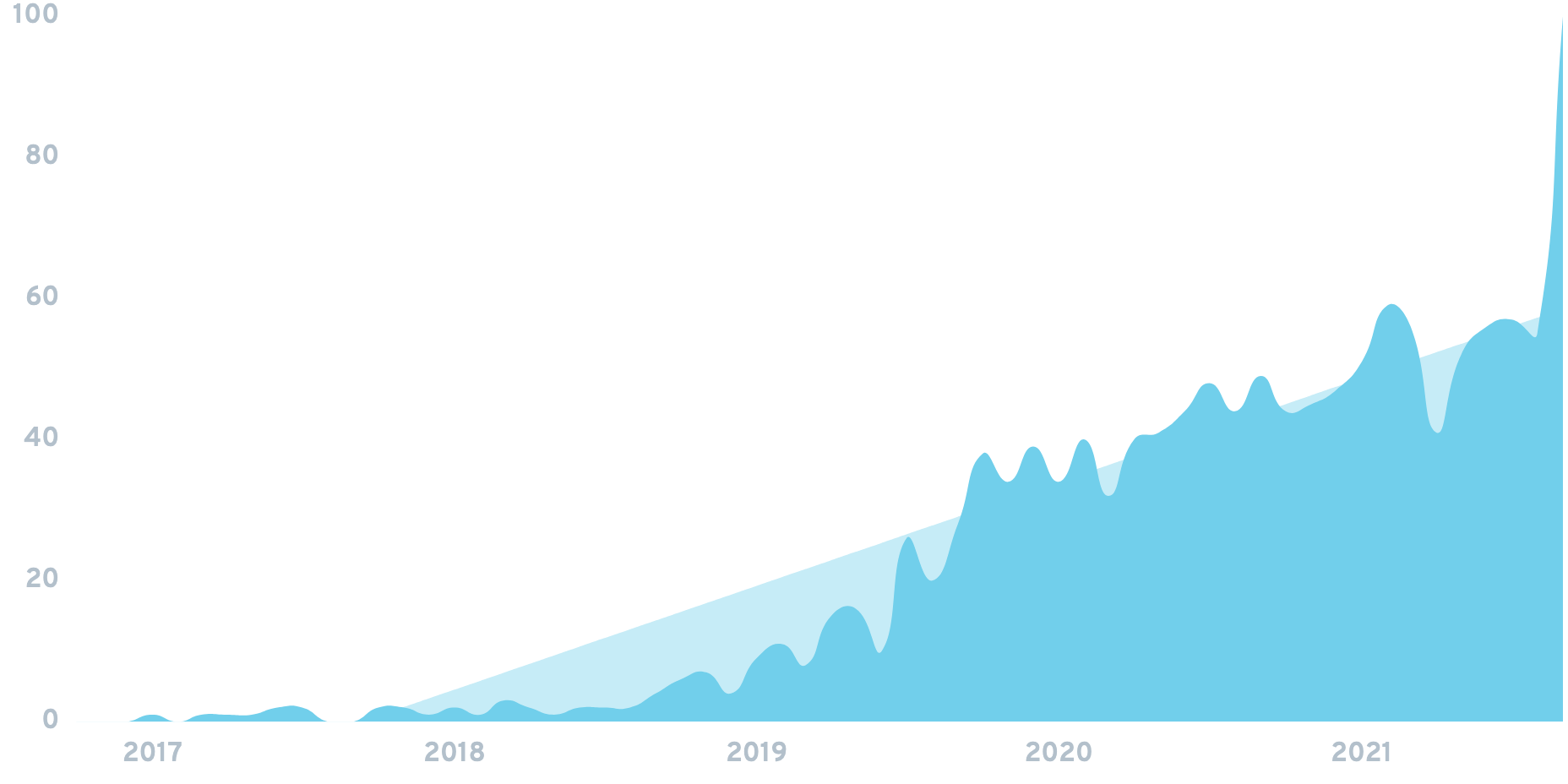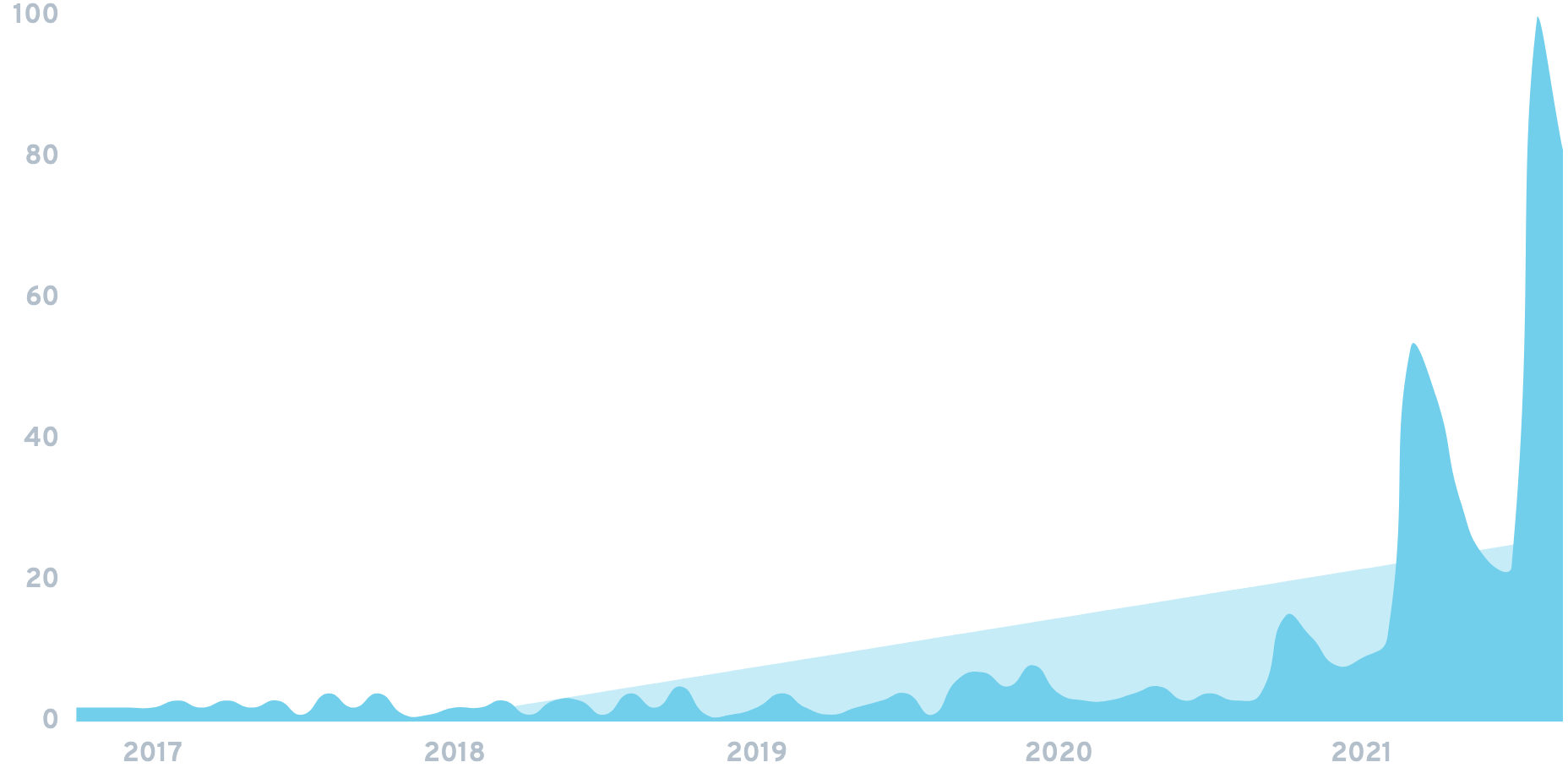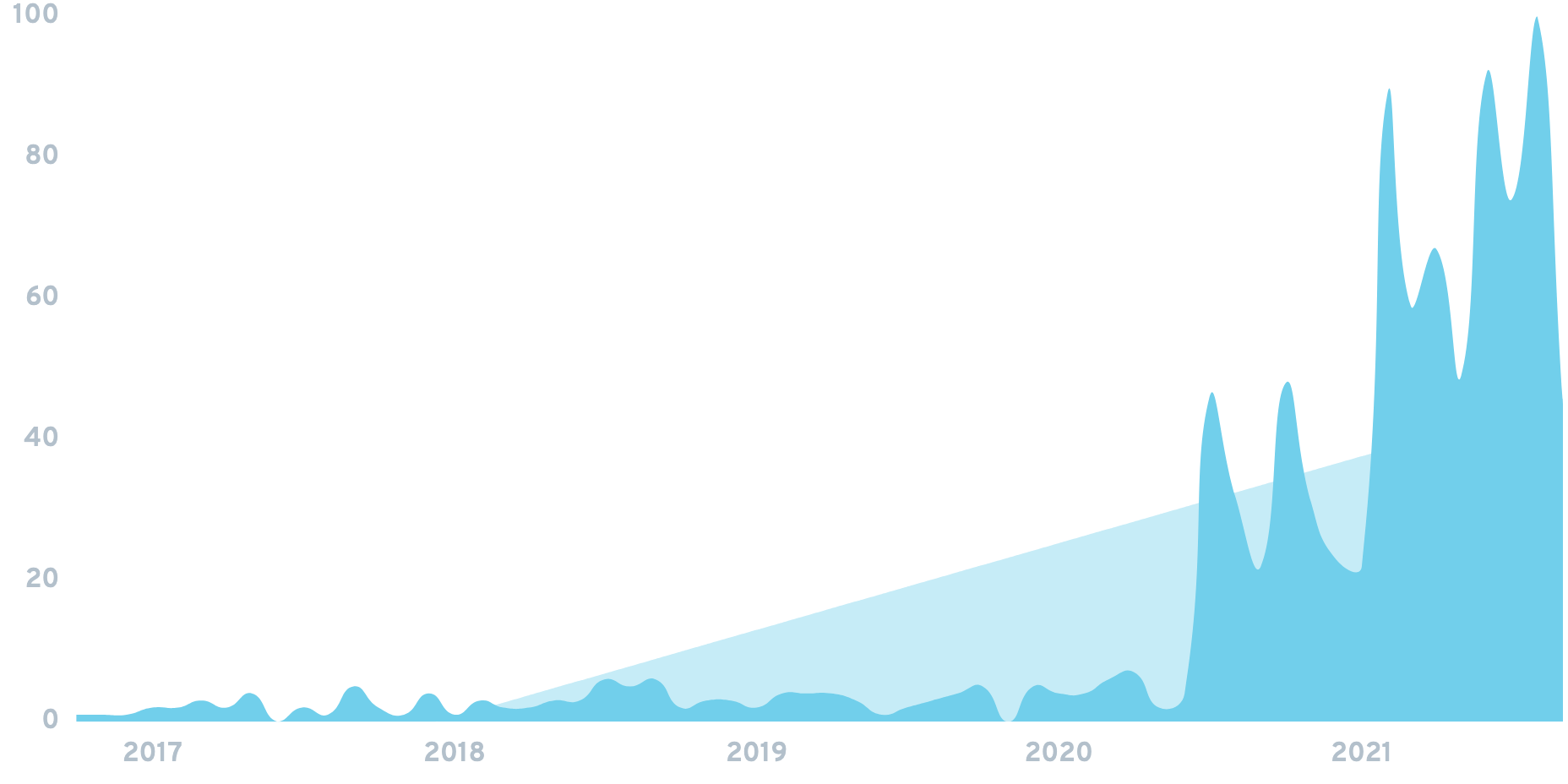Arbutin, Podman, + 2 more rapidly growing trends
Exploding Topics scours the internet to find emerging trends before they take off.
Here are four of the latest developments, along with some insights and analysis to help you take advantage.
1. Arbutin

Arbutin is a naturally-occurring skincare substance derived from the bearberry plant.
The glycoside inhibits the production of melanin, which can help to reduce acne scars.
The Ordinary is one of the leading sellers of arbutin. Founded in 2012, the brand is responsible for the majority of parent company DECIEM’s $460M revenue last year.
Obagi, a company specializing in anti-aging products, also sells an arbutin serum. A double-blind consumer study found that 85% of users noticed an improvement in overall skin appearance after 4 weeks.
The brand has an estimated annual revenue of $77.6M.
Naturium, launched by beauty influencer Susan Yara, is another brand offering arbutin products.
First-year revenue for the startup was an estimated $10M. Yara’s channel, Mixed Makeup, has more than 1.39M subscribers.
What’s next:
Arbutin is part of the ingredient-led skincare meta trend.
According to NPD, almost half of women research skincare products online before making a purchase.
The growth of Lab Muffin, a blog dedicated to the science of beauty, illustrates the growth of informed cosmetics consumers. The Instagram account now has 322K followers, compared to just 32K in March 2018.
TruSkin has built their brand around “vitamin C serum”. AmzScout estimates that the best-selling product generates $2.12M monthly.
And Rael Beauty prominently features the term “hydrocolloid” on its acne patches. The startup has raised a total of $20.3M in funding to date.
Other topics in the meta trend seeing rapid search growth include BHA, hyaluronic acid and retinol serum.
2. Podman

Podman is a platform for managing containers (packages of application code bundled along with dependencies).
The system is an alternative to Docker. The main difference is that Podman is “daemonless”: containers are executed under the user’s privileges, without the need to communicate with a central daemon containing the main logic.
Directly available on Linux, remote clients allow the Podman platform to function on MacOS and Windows.
Dethroning Docker is a tough task. The company has raised a total of $330.9M since its 2010 launch. But it sold off its largest revenue stream, the enterprise business, in 2019.
What’s next:
Podman is part of the Kubernetes tools meta trend.
Kubernetes dominates containerized application management. In fact, it is expected that 76% of enterprises will standardize on Kubernetes by 2022.
OpenShift, also part of Red Hat, is another tool designed to work with Kubernetes. A study found that the average 5-year ROI on OpenShift is 531%.
And average IT infrastructure costs for OpenShift users are 38% lower per application.
Other fast growing tools within the meta trend include Minikube, Quarkus and Kubeflow.
3. Audius

Audius is a music streaming platform on the blockchain.
Specifically, musicians can use Audius to distribute music and get paid directly from fans.
Besides the decentralized approach, the streaming service offers music quality at 320kbit/s (as a comparison, Spotify’s free version limited to 160kbit/s).
Audius is reported to have over 6M monthly active users in September, an increase from only 500K 12 months ago.
The market cap for Audius’s native token ($AUDIO) is currently around $821M.
The SF-based startup has raised $13.6M in funding to date.
What’s next:
Audius is a part of the “content on the blockchain” meta trend.
Only 10-15% of Spotify’s revenue goes to musicians. Fewer than 7% of Medium’s partner program authors earn more than $100 per month. And YouTube keeps almost half (45%) of content creator earnings.
Which is why a growing number of creators are flocking to Web 3.0 content distribution platforms.
In fact, Messari currently tracks 46 crypto assets related to content creation and distribution. Those assets have a market cap of $38B.
Here are some of the growing players in this space:
LBRY: Decentralized protocol for sharing digital content. The most popular app in the LBRY network (Odysee, a video streaming service) hosts 10M+ videos. The market cap for the platform’s coin (LBRY Credits) is now at over $18.5M.
Theta Token: Decentralized video streaming and delivery network. Theta’s tokens have a market cap of $5B, an increase from $1.97B in January.
Steemit: Decentralized social media platform powered by Steem blockchain. Content creators are awarded platform cryptocurrency (STEEM). STEEM’s market cap has tripled since January 2021.
4. Nap dress

A nap dress is a vintage-style, semi-casual women’s garment.
The name derives from the perceived suitability of the dress as both daywear and sleeping attire. Such dual functionality made the nap dress a pandemic hit.
Hill House Home, the makers of the nap dress, sold $1M worth of inventory in 12 minutes when new stock was put on sale in February.
And the dress generated more revenue in the 24 hours following the drop than it had brought in throughout all of 2019.
Fast Company reports that half of Hill House Home’s total revenue comes from sales of the nap dress.
An $8.4M funding round was announced in February.
What’s next:
The nap dress is part of the “lockdown-wear” meta trend.
By April last year, clothing sales were down 79% in the US. But sales of sweatpants were up 80%.
Pajama sales had increased 143% by May.
And Ododos, a leggings and yoga pants brand, generates $711K per month from its high-waisted leggings alone.
Other topics in this meta trend include athleisure, Zoom makeup and light academia.
